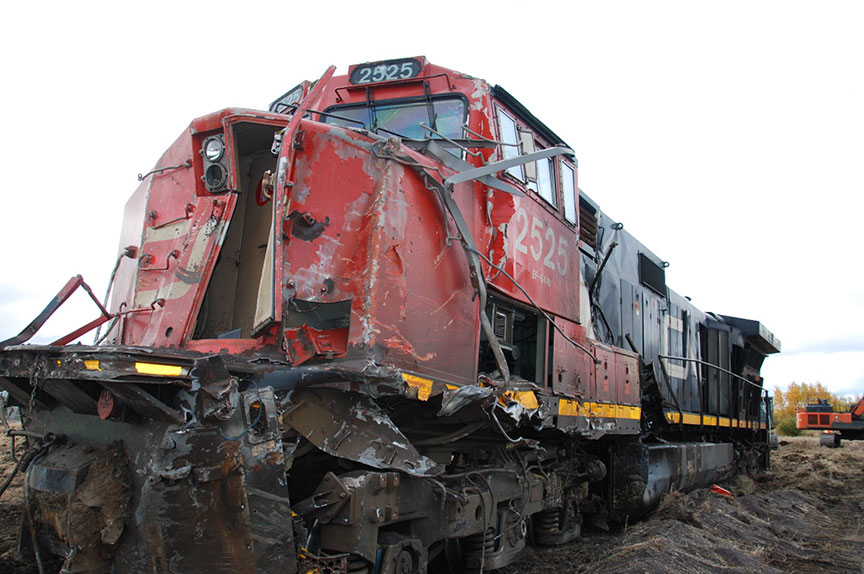Main-track derailment
Canadian National
Wainwright Subdivision, near Landis
The occurrence
On , a Canadian National Railway train, travelling westward at approximately 51 mph, experienced an undesired emergency brake application at mile 24.3 of the Wainwright Subdivision, near Landis, Saskatchewan. An inspection revealed that 41 cars, all loaded grain hoppers, and 2 mid-train remotes had derailed. No injuries have been reported and no dangerous goods were involved.
Media materials
News release
Investigation report: September 2018 main-track derailment in Landis, Saskatchewan
Read the news release
Deployment notice
TSB deploys a team of investigators to a train derailment near Landis, Saskatchewan
The Transportation Safety Board of Canada (TSB) is deploying a team of investigators to a Canadian National Railway train derailment that occurred near Landis, Saskatchewan. The TSB will gather information and assess the occurrence.
Investigation information
Download high-resolution photos from the TSB Flickr page.
Class of investigation
This is a class 4 investigation. These investigations are limited in scope, and while the final reports may contain limited analysis, they do not contain findings or recommendations. Class 4 investigations are generally completed within 220 days. For more information, see the Policy on Occurrence Classification.
TSB investigation process
There are 3 phases to a TSB investigation
- Field phase: a team of investigators examines the occurrence site and wreckage, interviews witnesses and collects pertinent information.
- Examination and analysis phase: the TSB reviews pertinent records, tests components of the wreckage in the lab, determines the sequence of events and identifies safety deficiencies. When safety deficiencies are suspected or confirmed, the TSB advises the appropriate authority without waiting until publication of the final report.
- Report phase: a confidential draft report is approved by the Board and sent to persons and corporations who are directly concerned by the report. They then have the opportunity to dispute or correct information they believe to be incorrect. The Board considers all representations before approving the final report, which is subsequently released to the public.
For more information, see our Investigation process page.
The TSB is an independent agency that investigates air, marine, pipeline, and rail transportation occurrences. Its sole aim is the advancement of transportation safety. It is not the function of the Board to assign fault or determine civil or criminal liability.
